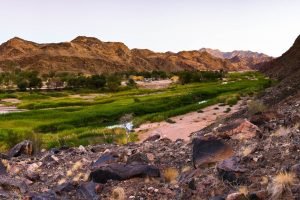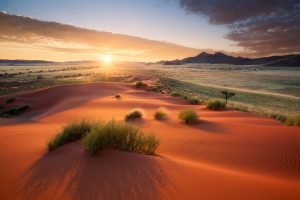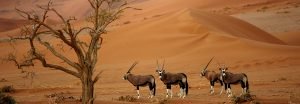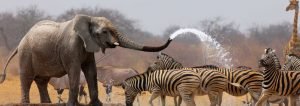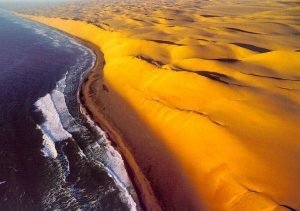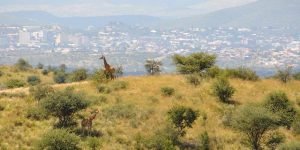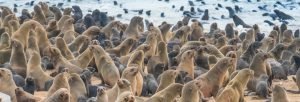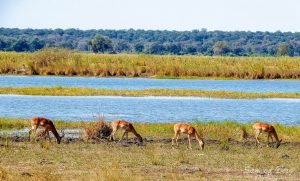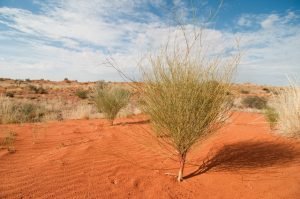
Etosha National Park
Etosha is one of the greatest game parks in Africa – and one of the oldest
– is also Namibia’s number-one tourist destination. Home to 114 large and small mammal species, more than 400 recorded bird species, scores of reptiles and even a fish species, Etosha is the country’s flagship park.

The size of the park has been reduced considerably since it was first proclaimed in 1907, but it still remains larger than several European countries. The Ondonga name for the pan was Etotha, meaning ‘the place where no plants grow’, but early European traders, unable to pronounce the name, called it ‘Etosha’. The pan was once part of the massive Lake Kunene fed by the Kunene River, which at some time in the distant past dried up, leaving the current pan system. Newly excavated fossils belonging to marsh-dwelling antelopes such as sitatunga, lechwe and tsessebe, and a 90- cm long catfish, are testament to much wetter periods.

Etosha has a proud record of black-rhino conservation, and white rhino were recently re-introduced. The park has also played a major role in the recovery of the endemic blackfaced impala. The Etosha Ecological Research Institute attracts scientists from around the world.
Etosha’s waterholes are famous among international tourists for spectacular game viewing and at the Okaukuejo waterhole at night it is possible to see black rhino, lion and elephant.
Park size 22 935 km2 (including Kaross and Khoabendes) Proclamation Etosha National Park in 1907 Natural features The park is dominated by an expansive salt pan and several smaller pans. Scenic waterholes have abundant game. The veld is flat and open, with the only hills around Halali Rest Camp and in the extreme west of the park. Vegetation Lakes and Salt Pans, Nama Karoo and Tree and Shrub Savannah biomes. Vegetation type: Karstveld Pans,
Western Kalahari, Mopane Shrubland, Etosha Grass and Dwarf Shrubland, North-Eastern Kalahari Woodlands, Western Highlands, Cuvelai Drainage. African moringa tree (Moringa ovalifolia) at Fairytale Forest, water-thorn (Acacia nebrownii), trumpetthorn (Catophractes alexandri), mopane (Colophospermum mopane), purple-pod terminalia (Terminalia prunoides).
Wildlife Elephant, black and white rhino, black-faced impala, lion, giraffe, leopard, eland, Burchell’s zebra, springbok, blue wildebeest, gemsbok, Damara dik-dik. The 407 bird species recorded include Woolly-necked Stork, Lappet-faced Vulture, Hartlaub’s Spurfowl, Carp’s Tit, White-tailed Shrike, Ruppell’s Parrot, Meyer’s Parrot.
